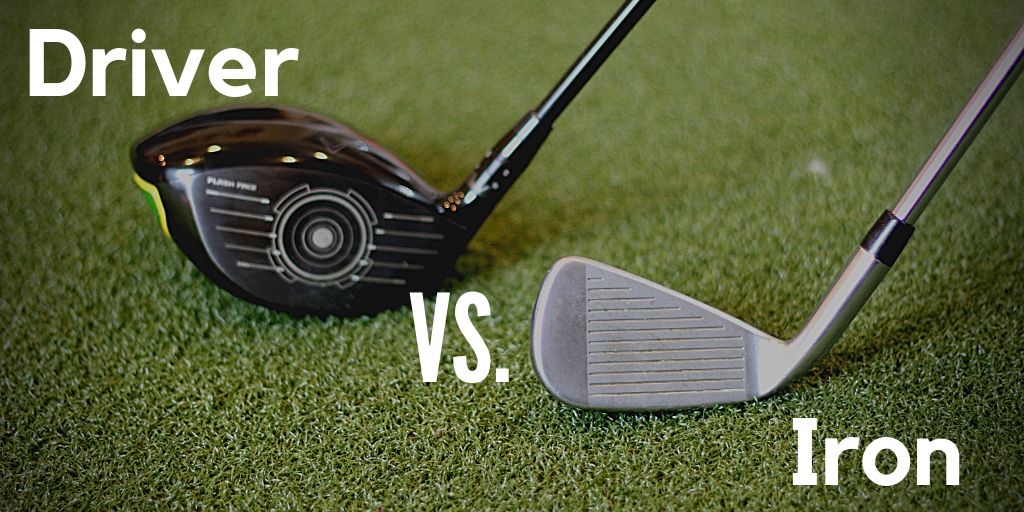
The club you select to hit off the tee can have a significant impact on your expected score on any given hole. As golfers, we are continually challenged by the course and our own abilities to make the optimal selection. For many, the choice comes down to what they perceive as safety or aggressiveness. In this article, I want to explore selecting to hit an iron off the tee versus driver, and how that can alter your expected score.
Recently, I conducted a test on my SkyTrak launch monitor to help me answer a few questions about my own game.
- How much more accurate am I with an iron off the tee versus my driver?
- How much distance am I giving up on average by choosing to hit an iron?
- Which strategy is more optimal?
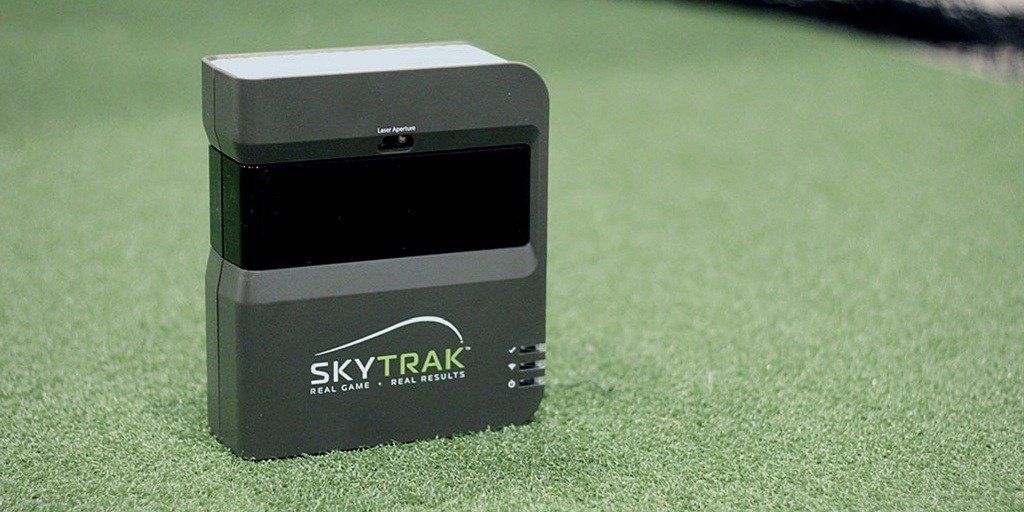
After years of studying statistics, measuring my own game, and observing others - I've changed my mind a lot about club selection off the tee. I have found golfers sometimes place too much value on safety and hitting fairways. It's why I believe fairways hit is a very misleading statistic. Additionally, we make assumptions about our club performance that often times aren't accurate.
I think my results will surprise you a bit, and hopefully get you thinking about your own game and doing some testing of your own.
The Test
Over the past several years, I've conducted a lot of interesting tests using my launch monitor. It helps shed light on topics like driver dispersion, how ball position can affect your ball flight, and how often you should change your wedges. Granted, these are hardly scientific experiments. But I know many readers have found value in me exploring these topics. My goal is always to get you to experiment on your own, and figure out the answers in your golf game.
For this test, I hit 30 shots with my 4-iron and driver. If I'm looking for the ultimate "safety" tee shot, my 4-iron is the club I use off the tee. I want to see the difference in choosing a very conservative approach on a hole that has a tight fairway versus hitting my driver.
Using my SkyTrak, I'm trying to track several parameters. I set up an imaginary 25-yard fairway with the software.
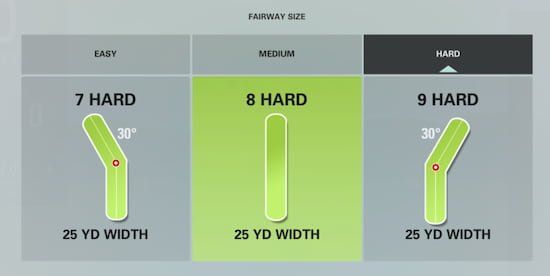
I'm paying attention to the following data:
- Percentage of fairways
- The total dispersion of my shots from left-to-right
- Typical distances for each club when I hit the fairway or miss it
4-Iron Results
For a long time, I avoided hitting my driver in favor of safer clubs off the tee. On holes that had tighter landing areas, I often chose a club like my 4-iron. I never stopped to think about the relationship between accuracy and distance, though. Was I that much more precise with an iron? Was the amount of distance I was giving up costing me strokes?
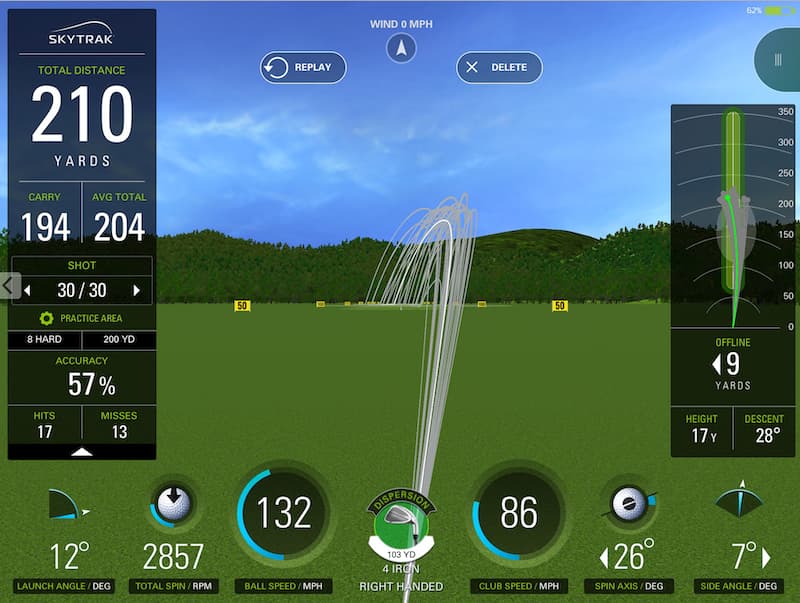
In my session on the SkyTrak, I thought I hit my iron reasonably well, and it was an accurate representation of the kind of performance I see on the course. Here are the pertinent stats:
- I hit the fairway 17 out of 30 times, which represents 57% accuracy
- My total dispersion from left-to-right on all shots was 48 yards wide
- A typical distance when I hit the fairway was around 210 yards. When I missed it was about 200 yards
Overall I was surprised. I thought my dispersion would have been much tighter with an iron. Additionally, while 57% on a tight fairway is not terrible, I was expecting I could hit somewhere around 70% of fairways.
Looking at my distribution pattern, you can see that I miss the fairway on both sides despite having a draw pattern on every ball flight.

This is typical of many other tests I have done, and it's why you should never assume that one side of the golf course is out of play because you tend to work the ball in one direction.
Driver Results
Over the past several years, I've put a lot of work into my driver. Where I used to consider it a liability off the tee, I view it as one of the strengths in my game now. That's not to say I'm perfect with it every round, but my overall performance is far better.
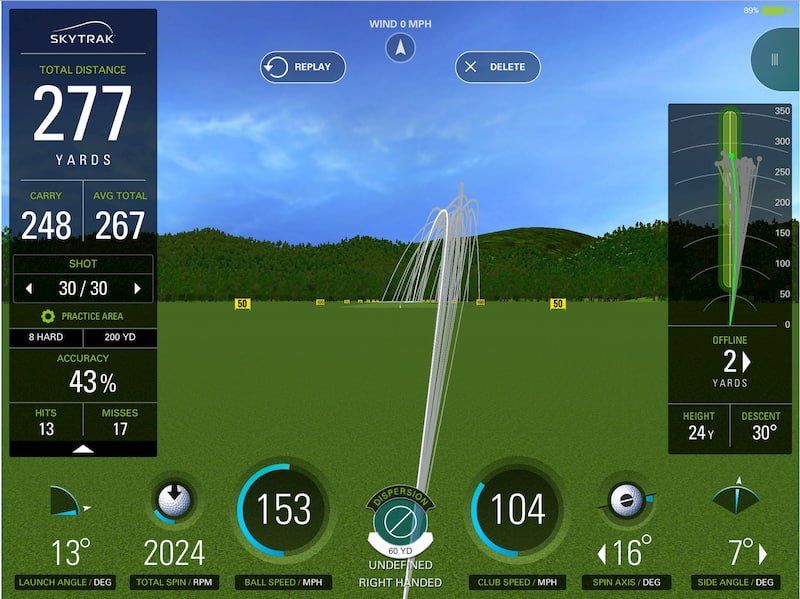
I knew that there would be a significant difference in total distance compared to my 4-iron. But I was more concerned with my misses; were they that much worse than my iron? Let's take a look:
- I hit the fairway 13 out of 30 times, which represents 43% accuracy
- My total dispersion from left-to-right on all shots was 67 yards wide
- A typical distance when I hit the fairway was around 270 yards. When I missed it was about 255 yards
I've done a lot of tests with my driver, and these numbers are common, especially my dispersion.

As expected, I did hit fewer fairways - but it was only four less than with an iron. Interestingly, my driver dispersion is not that much wider than my 4-iron - the difference is about 20 yards in width. On most golf holes, 10 yards in each direction is not going to be that penal.
Obviously, the most significant difference is the total distance. I'm giving up anywhere between 55-60 yards compared to my 4-iron on most shots.
Some Analysis
On the whole, I believe hitting an iron off the tee to gain accuracy would be a losing strategy in the long run for my game. The amount of distance I'm losing far outweighs the precision I would gain, which was less than I expected it would be.
Golf is a game of proximity. The closer you are to the hole, the lower your expected score is going to be. Modern statistical analysis has proven this to be true. Of course, there are exceptions when you take small sample sizes, but in the long run, it's almost impossible to avoid.
Mark Broadie is arguably the lead innovator when it comes to this kind of analysis. His advent of the strokes-gained statistic and his book Every Shot Counts revealed a lot of insights into how golfers separate themselves by performance in different parts of the game. His research has found that tee shot distance is more important for scoring than accuracy. Interestingly, he found that distance was even more critical for recreational golfers versus professional golfers. I also have learned a lot from Scott Fawcett and his DECADE strategy system, which has altered my tee-shot strategy as well.
Analysis of actual shot data from regular golfers has yielded the same results. Shot Scope, which is a popular game-tracking system used by golfers around the world released an analysis of their key findings. After looking at millions of shots across all different skill levels, they found that distance trumped fairway accuracy as well. For example, a driver that traveled 222 yards versus a 3-wood that landed 194 yards in the fairway would give a golfer a .3 stroke advantage on a hole. In my case, losing 60 yards with my 4-iron versus hitting driver would likely cost me over 1/2 a stroke per hole. Additionally, they noticed that landing the ball in the light rough was not as big of a penalty as they thought - it cost golfers roughly .3 strokes.
I even played around with an interesting calculator created by Lou Stagner from Golf Stat Pro. Using the data I found from my SkyTrak session I tried out a few different scenarios, and almost all of them resulted in a lower expected score with my driver.
In my case, I found that the shorter club wasn't all that much better at hitting fairways as I thought it would be. Golfers have traditionally placed too much value on landing the ball in the fairway, and many times it causes them to be more conservative than they have to be.
When Limiting Distance Makes Sense
I don't want to suggest that all of you should hit driver off the tee every single time, swing as hard as possible, and be aggressive on every hole. The other key factor in tee shot analysis is avoiding big trouble. Eluding fairway bunkers, trees, deep rough, and penalty areas is just as important as how far you can hit the ball.
I choose to hit an iron off the tee when I know limiting my distance avoids big trouble. For example, the 5th hole at my home course, St. George's G & CC presents an interesting decision off the tee. The widest landing area ends at about 215 yards off the tee, which is precisely how far I hit my 4-iron most of the time. Beyond that, the fairway narrows to about 25 yards and is surrounded by deep bunkers and fescue.
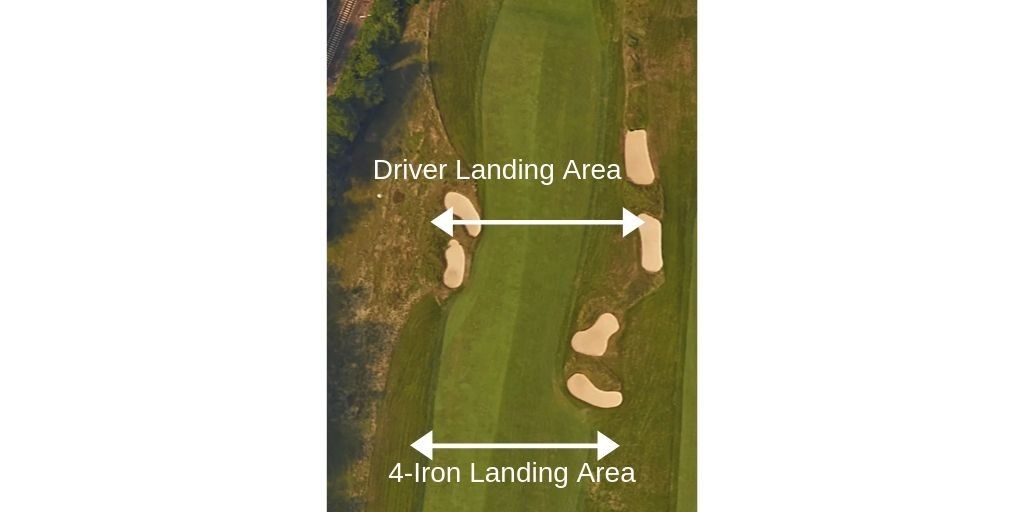
If I hit driver, I could potentially leave myself inside of 100 yards with my approach shot. But I know I cannot clear any of the bunkers on the fly. If I miss the fairway, I will land in the bunker, or have a treacherous lie in deep fescue, or many times fail to locate my ball. In other words, I will cost myself at minimum 1-2 shots if I miss the very narrow fairway. In this instance the penalty for missing the fairway with my driver is so severe, I believe that laying back with my 4-iron will allow me to play the hole with the lowest score in the long run because I know I cannot reach the bunkers and fescue.
However, let's say that same hole had mostly light rough and fewer fairway bunkers - I would hit driver every time. Having an approach shot of 100 yards or less, even in the light rough would yield a lower score than having to hit a 150-160 yard approach shot from the fairway.
A Few Caveats and Closing Thoughts
While some of the analysis I've done does apply to many golfers, your results might not be the same as mine. It's very possible that some of you are so erratic with your driver, that it does not make sense to hit it on certain holes. My advice would be not to avoid it altogether. If you can learn to keep your driver in play more often, it will result in a dramatic drop in your scores. Practice more, get your equipment evaluated, or take lessons.
I always suggest that if golfers want to know more about their own game, then they should test themselves. For a long time, I played too conservatively off the tee using the wrong assumptions. I didn't realize that laying back was costing me so many strokes. More importantly, I also didn't know that I wasn't as accurate with an iron off the tee as I thought I was. Adjusting my strategy off the tee has definitely lowered my scores, and this most recent test confirms what I suspected was the case. Having the data from my on-course performance and using a launch monitor has helped give clarity to my strategic decisions. It also has given me more confidence when I step up to the tee box, knowing that I'm making the optimal choice.
While I can't tell you how to evaluate every single hole you play, I can tell you that your overall goal should be to advance the ball as far as possible while avoiding major trouble off the tee. Don't fall victim to thinking that it's fairway or bust. A tee-shot plan that is way too conservative can be just as costly as one that is too aggressive. When it comes to choosing an iron versus a driver off the tee, start taking those thoughts into consideration.
If you want to see some other tests I've conducted you can read the following articles:
You Don't Have As Much Control Over the Ball As You Think You Do
How Does Dirt and Water Affect Spin Rate?
We care about the protection of your data Read our Privacy Policy